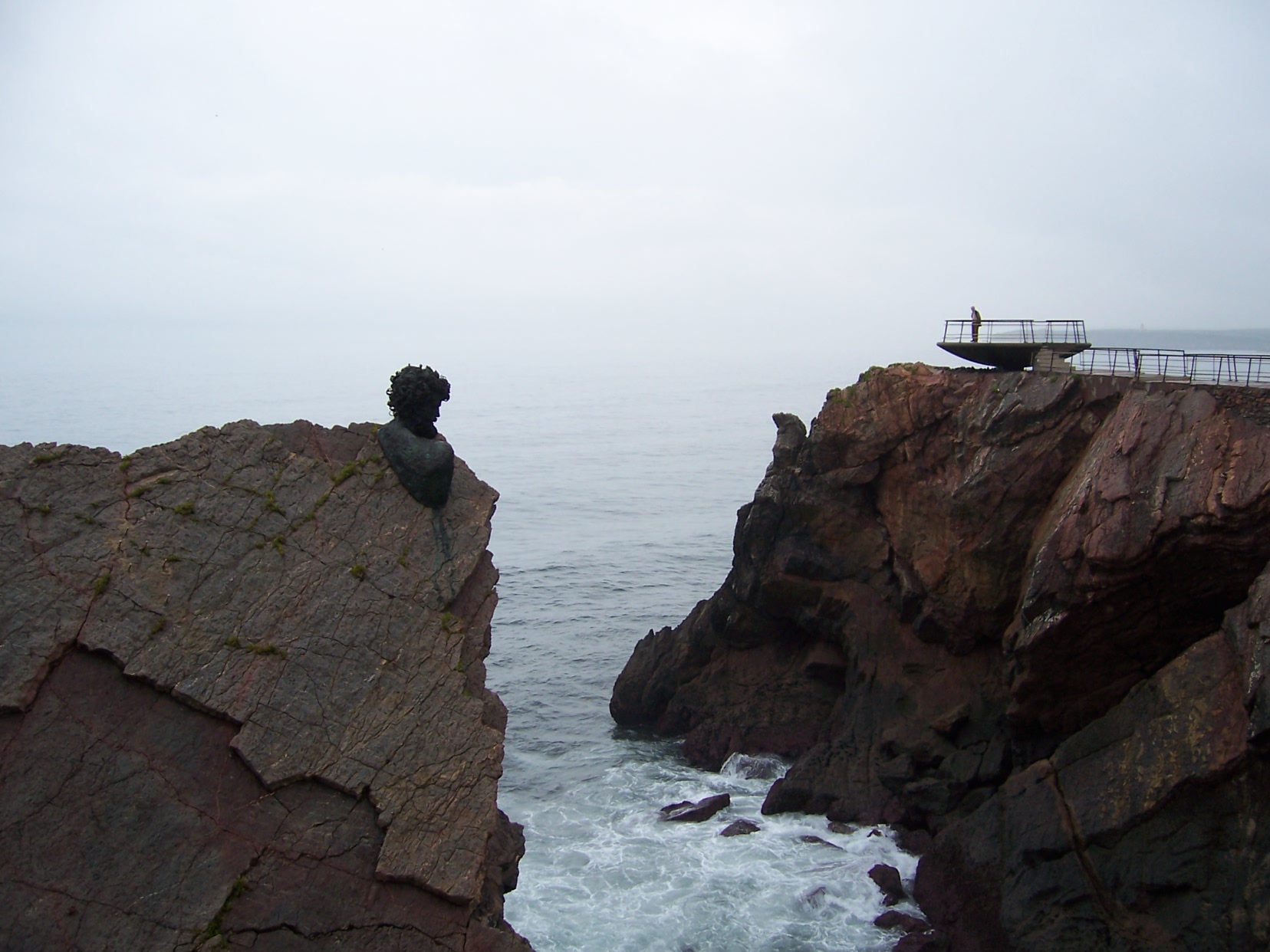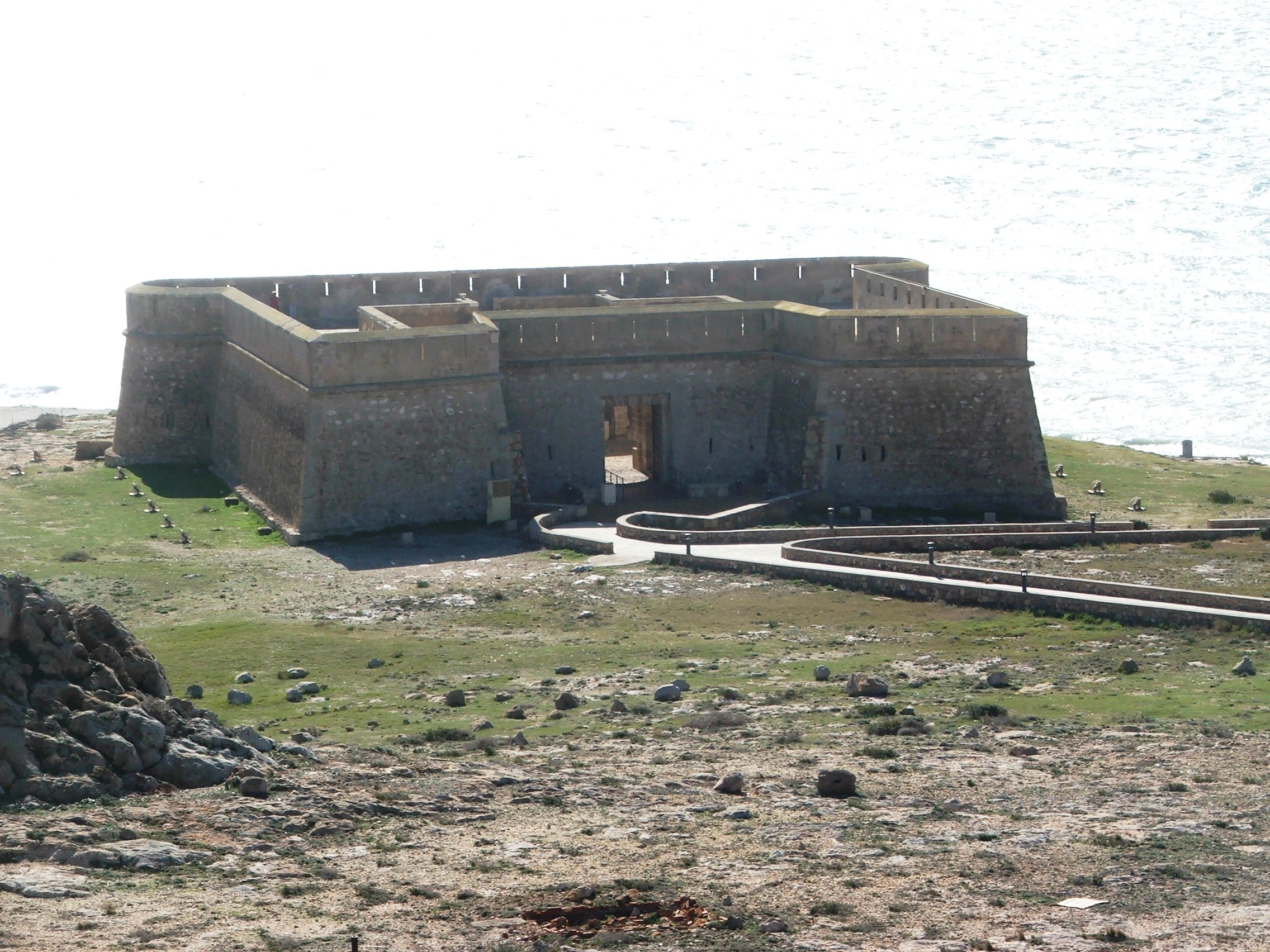|
Castillo De Gauzón
Castillo de Gauzón (Gauzón Castle) is a ruined Spanish fortification. It is located in the municipality of Castrillón, Asturias, Spain. Little remains of it, partly because many of the stones that formed it were taken by the area residents to build houses and other structures. The structure holds special significance for Asturias because it was there that the Victory Cross was encased in gold and precious stones. Archaeological excavations at the site dated it to the ninth century but more recent tests with Carbon-14 have dated construction to the mid-7th century. See also *List of castles in Spain The castles in Spain were built mainly for the country's defense, particularly with respect to fortification. During the Middle Ages, northern Christian kingdoms had to secure their borders with their Muslim southern neighbours, thus forcing bo ... References Gauzon Ruins in Spain Buildings and structures completed in the 7th century 7th-century fortifications { ... [...More Info...] [...Related Items...] OR: [Wikipedia] [Google] [Baidu] |
Peñón De Raíces
A ''peñón'' (, "rock", pl. ''peñones'') is a term for certain offshore rocky island forts established by the Spanish Empire (especially in Africa). Several are still part of the ''plazas de soberanía'' ("places of sovereignty") of Spain in Northern Africa. Quick facts A peñón is as a mountain surrounded by water, usually by the sea. Among the most famous is the Peñón de Vélez de la Gomera, off the coast of Morocco, still a Spanish territory to this day. There is also the Peñón de Alhucemas nearby. The Peñón of Algiers (''Peñón de Argel'') was established in 1510, when the Spaniards settled on a small island in front of Algiers (modern Algeria), and forced the local ruler Sālim al-Tūmī (Selim-bin-Teumi) to accept their presence through a treaty and pay tribute. List of ''peñones'' *Peñón de Calpe * Peñón de Alhucemas * Peñón de Argel * Peñón de Gibraltar (Rock of Gibraltar) *Peñón de Vélez de la Gomera (; ) is a Spanish exclave and rocky ... [...More Info...] [...Related Items...] OR: [Wikipedia] [Google] [Baidu] |
Castrillón
Castrillón is a municipality in Asturias, located on the central coast. It has an area of 56.70 km² and a population of 22,361 inhabitants (in 2005). The most important population centres are the capital Piedras Blancas, Salinas, and Raíces. Asturias Airport is located in Castrillón. The airport is located in Anzu, parish of Santiago del Monte, municipality of Castrillón, 15 km from Avilés, 40 km from Gijón and 47 km from the regional capital, Oviedo. Geography Situated on the littoral plain, the county is one of the flattest areas in Asturias. Its coast is formed by a series of beaches and cliffs. For this reason, the county is known as "the county of the 7 beaches", even though there are more than seven beaches along its long coastline. Inland, the area is characterized by the smoothness of the landscape, mainly formed by fertile valleys with a small river network that crosses the county. The altitude increases steadily towards the Southwest, ... [...More Info...] [...Related Items...] OR: [Wikipedia] [Google] [Baidu] |
Asturias
Asturias (, ; ast, Asturies ), officially the Principality of Asturias ( es, Principado de Asturias; ast, Principáu d'Asturies; Galician-Asturian: ''Principao d'Asturias''), is an autonomous communities of Spain, autonomous community in northwest Spain. It is coextensive with the provinces of Spain, province of Asturias and contains some of the territory that was part of the larger Kingdom of Asturias in the Middle Ages. Divided into eight Comarcas of Asturias, ''comarcas'' (counties), the autonomous community of Asturias is bordered by Cantabria to the east, by Province of León, León (Castile and León) to the south, by Province of Lugo, Lugo (Galicia (Spain), Galicia) to the west, and by the Cantabrian Sea, Cantabrian sea to the north. Asturias is situated in a mountainous setting with vast greenery and lush vegetation, making it part of Green Spain. The region has a oceanic climate, maritime climate. It receives plenty of annual rainfall and little sunshine by Spanish ... [...More Info...] [...Related Items...] OR: [Wikipedia] [Google] [Baidu] |
Victory Cross
The Victory Cross ( Asturian and Spanish: ''Cruz de la Victoria'') is an early 10th century Asturian crux gemmata or jewelled cross, given by King Alfonso III of Asturias, who reigned from 866 to 910, to the Cathedral of San Salvador of Oviedo (Asturias, Spain). It was made in 908 in the Castle of Gauzón (Raices Viejo, Castrillón, Asturias). At the core is an oakwood cross, in legend identified with a cross carried by King Pelagius of Asturias at the Battle of Covadonga. Since December 1990, the flag of modern Principality of Asturias bears the Victory Cross offset towards the hoist. History According to legend, the primitive, undecorated wooden core of this cross was carried against the Muslims of al-Andalus by King Pelagius of Asturias at the Battle of Covadonga, later kept by his son Favila of Asturias in the Church of Santa Cruz de Cangas de Onís, erected by Favila and his wife Froiluba in 737, and dedicated to the True Cross in Cangas de Onís, the first cap ... [...More Info...] [...Related Items...] OR: [Wikipedia] [Google] [Baidu] |
Carbon-14
Carbon-14, C-14, or radiocarbon, is a radioactive isotope of carbon with an atomic nucleus containing 6 protons and 8 neutrons. Its presence in organic materials is the basis of the radiocarbon dating method pioneered by Willard Libby and colleagues (1949) to date archaeological, geological and hydrogeological samples. Carbon-14 was discovered on February 27, 1940, by Martin Kamen and Sam Ruben at the University of California Radiation Laboratory in Berkeley, California. Its existence had been suggested by Franz N. D. Kurie, Franz Kurie in 1934. There are three naturally occurring isotopes of carbon on Earth: carbon-12 (), which makes up 99% of all carbon on Earth; carbon-13 (), which makes up 1%; and carbon-14 (), which occurs in trace amounts, making up about 1 or 1.5 atoms per 1012 atoms of carbon in the atmosphere. Carbon-12 and carbon-13 are both stable, while carbon-14 is unstable and has a half-life of 5,730 ± 40 years. Carbon-14 decays into nitrogen-14 () through bet ... [...More Info...] [...Related Items...] OR: [Wikipedia] [Google] [Baidu] |
List Of Castles In Spain
The castles in Spain were built mainly for the country's defense, particularly with respect to fortification. During the Middle Ages, northern Christian kingdoms had to secure their borders with their Muslim southern neighbours, thus forcing both Christian and Muslim kings to grant border fiefs to their liege noblemen so as to keep and maintain defensive fortresses. When the Reconquista advanced, those border castles lost their initial purpose, and, as in the rest of medieval Europe, they were used as noble residences and fief-keeps. Sporadic threats of war maintained their initial military purposes as enemy invasions were common. In some locations, such as the Basque country, fiefdoms did not exist as such, and noble families could not afford nor did they need huge fortresses, giving rise to many tower houses. In Muslim Spain many castle-palaces were built: the petty ''taifa'' kingdoms that arose after the fall of the Caliphate of Córdoba were militarily weak thus castles beg ... [...More Info...] [...Related Items...] OR: [Wikipedia] [Google] [Baidu] |
Castles In Asturias
The castles in Spain were built mainly for the country's defense, particularly with respect to fortification. During the Middle Ages, northern Christian kingdoms had to secure their borders with their Muslim southern neighbours, thus forcing both Christian and Muslim kings to grant border fiefs to their liege noblemen so as to keep and maintain defensive fortresses. When the Reconquista advanced, those border castles lost their initial purpose, and, as in the rest of medieval Europe, they were used as noble residences and fief-keeps. Sporadic threats of war maintained their initial military purposes as enemy invasions were common. In some locations, such as the Basque country, fiefdoms did not exist as such, and noble families could not afford nor did they need huge fortresses, giving rise to many tower houses. In Muslim Spain many castle-palaces were built: the petty ''taifa'' kingdoms that arose after the fall of the Caliphate of Córdoba were militarily weak thus castles began ... [...More Info...] [...Related Items...] OR: [Wikipedia] [Google] [Baidu] |
Ruins In Spain
Ruins () are the remains of a civilization's architecture. The term refers to formerly intact structures that have fallen into a state of partial or total disrepair over time due to a variety of factors, such as lack of maintenance, deliberate destruction by humans, or uncontrollable destruction by natural phenomena. The most common root causes that yield ruins in their wake are natural disasters, armed conflict, and population decline, with many structures becoming progressively derelict over time due to long-term weathering and scavenging. There are famous ruins all over the world, with notable sites originating from ancient China, the Indus Valley and other regions of ancient India, ancient Iran, ancient Israel and Judea, ancient Iraq, ancient Greece, ancient Egypt, Roman sites throughout the Mediterranean Basin, and Incan and Mayan sites in the Americas. Ruins are of great importance to historians, archaeologists and anthropologists, whether they were once individual forti ... [...More Info...] [...Related Items...] OR: [Wikipedia] [Google] [Baidu] |
Buildings And Structures Completed In The 7th Century
A building, or edifice, is an enclosed structure with a roof and walls standing more or less permanently in one place, such as a house or factory (although there's also portable buildings). Buildings come in a variety of sizes, shapes, and functions, and have been adapted throughout history for a wide number of factors, from building materials available, to weather conditions, land prices, ground conditions, specific uses, prestige, and aesthetic reasons. To better understand the term ''building'' compare the list of nonbuilding structures. Buildings serve several societal needs – primarily as shelter from weather, security, living space, privacy, to store belongings, and to comfortably live and work. A building as a shelter represents a physical division of the human habitat (a place of comfort and safety) and the ''outside'' (a place that at times may be harsh and harmful). Ever since the first cave paintings, buildings have also become objects or canvasses of much artistic ... [...More Info...] [...Related Items...] OR: [Wikipedia] [Google] [Baidu] |





